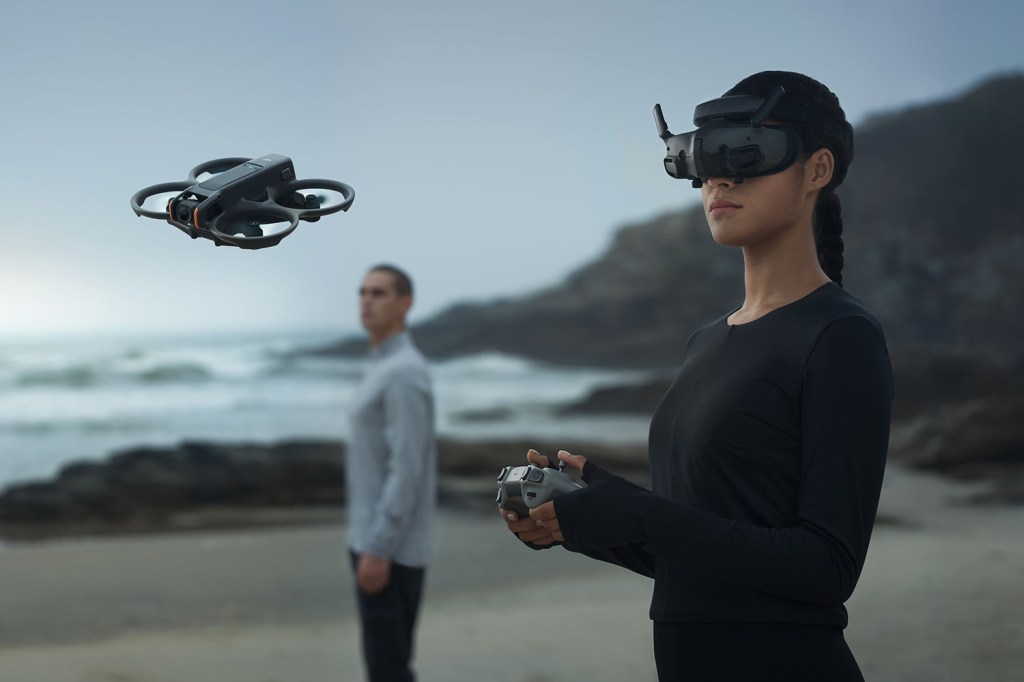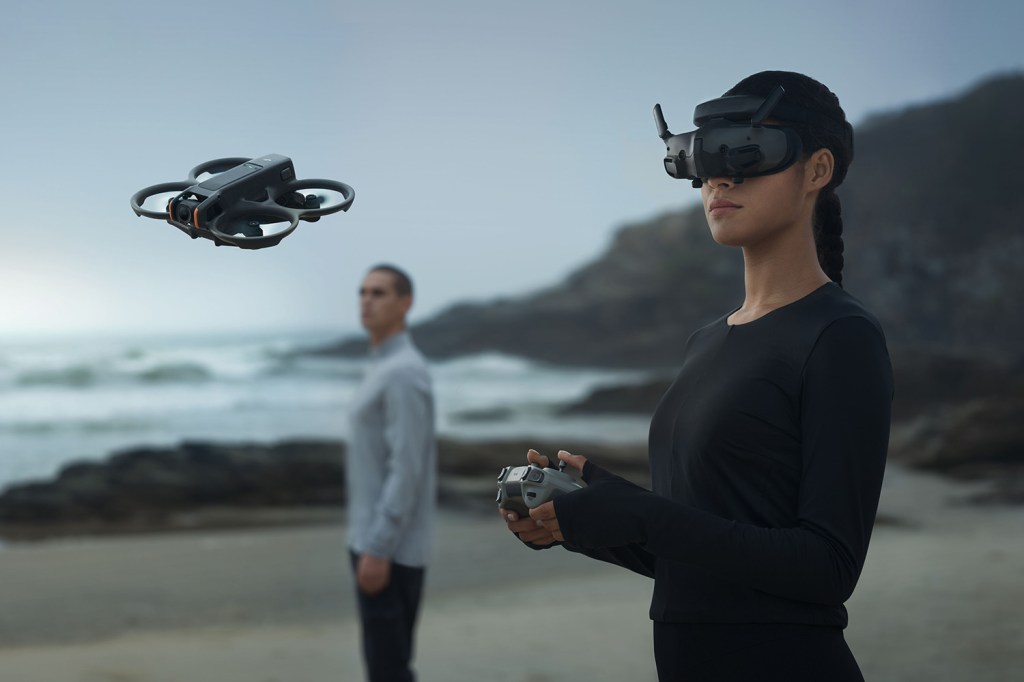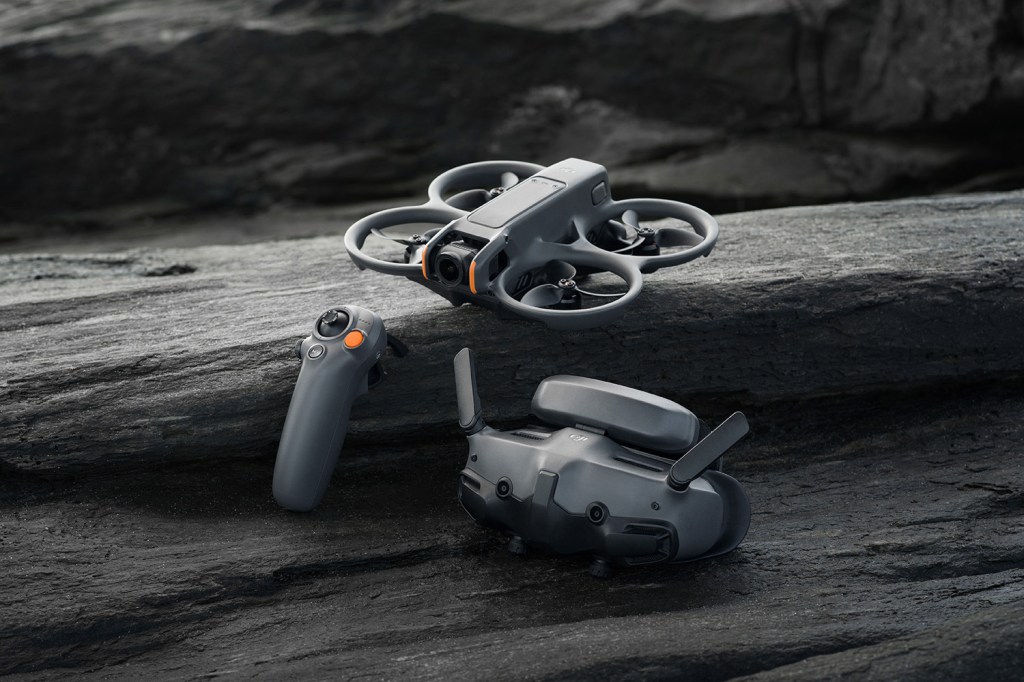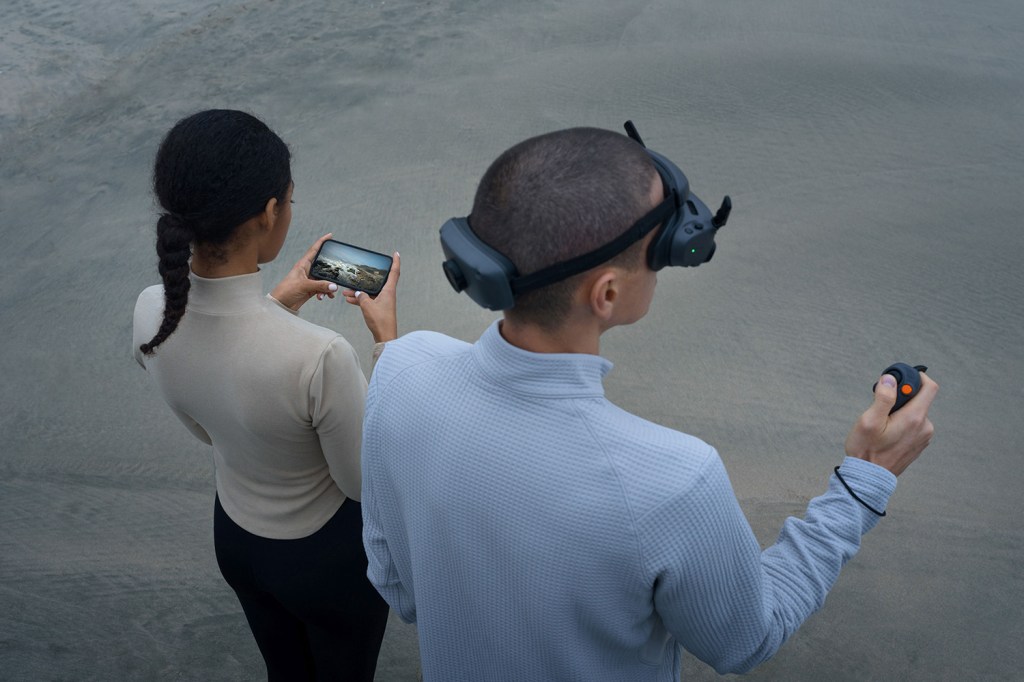
DJI might be an old hand when it comes to camera drones, but it’s still a relative newcomer in the FPV drone space. The DJI Avata 2, announced today, is only the company’s third FPV (First-person view) model following 2020’s FPV and 2022’s Avata.
But from what I’ve seen so far, it’s the most appealing and consumer-friendly model by some distance – and an indicator that DJI has already made itself comfortable in an FPV market once reserved for DIY hobbyists and racers.
The Avata 2 drone itself has a sleeker profile than its predecessor. Its camera is mounted up front rather than on top and its integrated propeller guards are made of a lighter material. DJI claims it’s more agile and navigable in tight spaces as a result. As with the original Avata, a full battery delivers about 23 minutes of flight time.


Go go gadget Goggles
There’s a new RC Motion 3 motion-sensitive controller too, with some minor tweaks compared to the previous version. The biggest design change comes in the third main part of the Avata 2 package, though: the Goggles 3.
Worn to get a real-time first-person view through the drone’s camera, the new Goggles feature an easy-to-adjust strap (just twist a knob to tighten or loosen it). Even better, they have cameras on the outside to offer a pass-through view. This means you don’t have to take them off to see your surroundings – a major pain point for me when using the original Avata’s headset. Being a glasses wearer meant having to put my specs back on every time too, which quickly got old. Here, two taps on the side of the headset toggle between the drone view and the outside view. So much better.


The camera has been slightly improved too, with a slightly larger 1/1.3in sensor improving low-light performance as well as supporting the D Log M 10-bit colour mode. It offers the same 155º wide viewing angle and resolution/frame rate combinations (4K at 60fps or 2.7K/1080p at 120fps). As before, there are two forms of electronic image stabilisation on offer: RockSteady (which smoothes everything out) and HorizonSteady (which keeps the horizon level where possible). Footage and 48MP still photos can be saved to a microSD card or the 46GB of internal memory (up from 20GB on the original Avata).
Available to pre-order now




The DJI Avata 2 is available to pre-order now from the DJI website, priced at US$999/£879/€999 for a single-battery Fly More Combo (which includes the drone, Goggles 3 and RC Motion 3) or $1199/£1049/€1199 for the three-battery Fly More Combo (which includes the same plus a charging hub and carrying bag). Separately, you can also buy a gamepad-style twin-stick FPV Remote Controller 3 ($199/£139/€149) to offer an alternative control method, and an ND Filters Set ($79/£59/€69) to allow you more control over camera shutter speeds – a must if you want to achieve that eye-pleasing motion blur for fast-moving videos.
A quick note for UK residents: the Avata 2 is a little lighter than its predecessor (380g as opposed to 410g). But it still falls into the above-250g category that, in the UK, severely restricts where it can be legally flown. Look: e-scooters are illegal on UK roads and I have to dodge what seems like dozens of them every day while walking around; I would expect the police to take drone piloting lawbreakers about as seriously. Still, be aware that you technically aren’t allowed to fly the Avata 2 in recreational, residential, commercial and industrial areas. If you want something legal, try the excellent DJI Mini 4 Pro instead.






